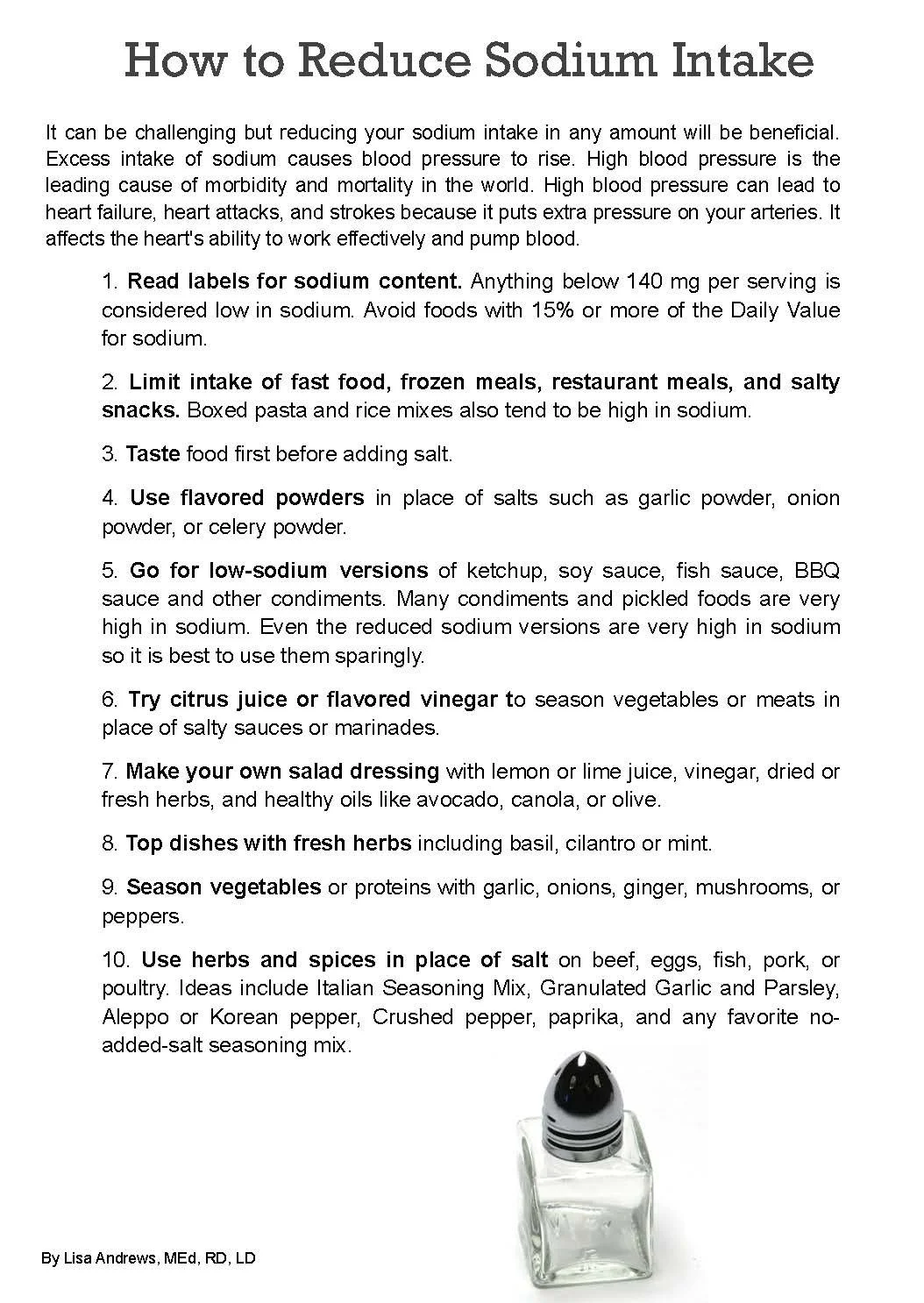Handout: Reduce Sodium Intake
Reducing sodium intake can be a key factor in improving heart health and overall well-being. Here are three easy ways to reduce sodium in your diet:
1. Choose Fresh and Unprocessed Foods
Opt for Fresh Produce: Fresh fruits and vegetables are naturally low in sodium. Incorporate a variety of them into your meals and snacks.
Select Fresh Meats: Instead of processed meats (like deli meats, bacon, and sausages), choose fresh cuts of meat, poultry, and fish. These options have significantly less sodium.
Cook from Scratch: Preparing meals at home allows you to control the amount of salt added to your food. Use herbs, spices, and other seasonings to enhance flavor without relying on salt.
2. Read Labels and Choose Low-Sodium Options
Check Nutrition Labels: Look for foods labeled "low sodium," "very low sodium," or "no salt added." Aim for products that contain less than 140 milligrams of sodium per serving.
Avoid High-Sodium Processed Foods: Common high-sodium foods include canned soups, frozen dinners, packaged snacks, and processed cheese. Opt for their lower-sodium counterparts or make your own versions.
Be Mindful of Condiments and Sauces: Many condiments, sauces, and dressings are high in sodium. Choose low-sodium versions or use smaller amounts. Consider making your own with fresh ingredients.
3. Use Alternative Seasonings and Cooking Methods
Herbs and Spices: Use fresh or dried herbs and spices such as garlic, basil, oregano, thyme, rosemary, and paprika to add flavor without salt.
Citrus and Vinegars: Lemon juice, lime juice, and various types of vinegar (like balsamic, apple cider, or red wine vinegar) can add a burst of flavor to your dishes.
Salt-Free Seasoning Blends: Use commercial salt-free seasoning blends or create your own mix of herbs and spices to enhance your meals.
Additional Tips:
Rinse Canned Foods: If you use canned beans or vegetables, rinse them under water to remove some of the sodium.
Gradually Reduce Salt: If you’re used to heavily salted food, gradually reduce the amount of salt you use to allow your taste buds to adjust.
Be Careful with Restaurant Food: When dining out, ask for your meal to be prepared without added salt or choose restaurants that offer low-sodium options.
By incorporating these strategies into your daily routine, you can effectively reduce your sodium intake and promote better health.

